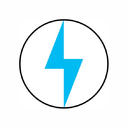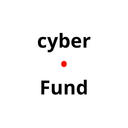
Monero
- #PoW
- #Privacy Coins
- #Binance BUSD
- #Binance Not listed (USDT)
- 162.41
- $62.61M
- $3BRank #45
- 18.45M
Similar News
More Info- 06-04 10:00
The Binance World Championship Special: Trade $100 Each on Convert, Spot & Futures To Win...
- 06-03 22:00
MiCA Stablecoin Rules Implementation Announcement
- 06-03 10:15
Word of the Day: Test Your Knowledge on Life in Binance to Earn Binance Points...
- 05-31 15:00
Updates on Minimum Order Size for Spot and Margin Trading Pairs (2024-06-07)
- 05-30 21:28
Binance Futures Will Launch USDT-Margined TURBO Perpetual Contract With Up to 50x Leverage
Market Signal
More InfoCryptocurrency Calendar

NO DATA
What Is Monero (XMR)?
Monero was launched in 2014, and its goal is simple: to allow transactions to take place privately and with anonymity. Even though it’s commonly thought that BTC can conceal a person’s identity, it’s often easy to trace payments back to their original source because blockchains are transparent. On the other hand, XMR is designed to obscure senders and recipients alike through the use of advanced cryptography.
The team behind Monero say privacy and security are their biggest priorities, with ease of use and efficiency coming second. It aims to provide protection to all users — irrespective of how technologically competent they are.
Overall, XMR aims to allow payments to be made quickly and inexpensively without fear of censorship.
Who Are the Founders of Monero?
Seven developers were initially involved in creating Monero — five of whom decided to remain anonymous. There have been rumors that XMR was also invented by [Satoshi Nakamoto], the inventor of Bitcoin.
XMR’s origins can be traced back to Bytecoin, a privacy-focused and decentralized cryptocurrency that was launched in 2012. Two years later, a member of the Bitcointalk forum — only known as thankful_for_today — forked BCN’s codebase, and Monero was born. They had suggested “controversial changes” to Bytecoin that others in the community disagreed with and decided to take matters into their own hands.
It’s believed that hundreds of developers have contributed to XMR over the years.
What Makes Monero Private?
Users shouldn't view all privacy cryptocurrencies as interchangeable or equivalent services because they don't all achieve privacy in the same way. For instance, XMR should be considered a technology that, when used properly, obscures user data on the blockchain, making it harder to identify its users.
What Gives Monero Value?
The secrecy and anonymity offered by Monero are what most users find valuable. It gives people the freedom to conduct cryptocurrency transactions anytime they want for any purpose without being concerned about being watched by the government, hackers or other outside parties. XMR coins cannot be traced, thus they cannot be blacklisted by businesses for alleged illicit connections.
Investors who think that demand for privacy will rise in the future, raising the price and total [market cap] of XMR, may find value in Monero in addition to its use as a medium of exchange.
Mining on Monero
Monero uses a [Proof-of-Work] algorithm, RandomX, to validate transactions. The method was introduced in November 2019 to replace the former algorithm CryptoNightR. Both were designed to be [ASIC-resistant].
Monero can be mined somewhat efficiently on consumer-grade hardware, such as x86, x86-64, ARM and GPUs, a design decision that was based on Monero's opposition to mining centralization that [ASIC] mining creates. However, it has also resulted in Monero's popularity among malware-based non-consensual miners.\u003csup\u003e \u003c/sup\u003e
In October of 2021, the Monero project introduced P2Pool, a mining pool running on a [sidechain] that gives participants full control of their node as with solo mining configurations.
What Makes Monero Unique?
There are several things that make Monero unique. One of the project’s biggest aims is achieving the greatest level of decentralization possible, meaning that a user doesn’t need to trust anyone else on the network.
Privacy is achieved through a few distinctive features. Whereas each Bitcoin in circulation has its own serial number, meaning that cryptocurrency usage can be monitored, XMR is completely fungible. By default, details about senders, recipients and the amount of crypto being transferred are obscured — and Monero advocates says this offers an upper hand over rival privacy coins such as Zcash, which are “selectively transparent.”
Obfuscation is achieved through the use of ring signatures. Here, past transaction outputs are picked from the blockchain and act as decoys, meaning that outside observers can’t tell who signed it. If Ian was sending 200 XMR to Susan, this amount could also be split into random chunks to add a further level of difficulty.
To ensure that transactions cannot be linked to one another, stealth addresses are created for every single transaction that are only used once.
All of these distinctive features have led to XMR being increasingly used for illicit transactions instead of Bitcoin — especially on darknet markets. Governments around the world, especially the U.S., have also offered hundreds of thousands of dollars to anyone who can crack Monero’s code.
**Related Pages**:
[Find out about Zcash, another privacy coin]
[All you need to know about the basics of crypto]
[What is a ring signature?]
[CoinMarketCap Blog: Interviews with top crypto influencers]
How Many Monero (XMR) Coins Are There in Circulation?
Monero is slightly unusual as a token sale wasn’t held for XMR — and no tokens were premined either. At the time of writing, the circulating supply of XMR stands at 18,188,773.23.
This cryptocurrency is designed to be resistant to application-specific integrated circuits, which are commonly used for mining new Bitcoin. In theory, this means that it can be possible to mine XMR using everyday computing equipment.
Overall, there will eventually be a total of 18.4 million XMR in circulation — and this cap is expected to be reached on May 31, 2022. After this, miners will be incentivized using “tail emissions,” with a small amount of XMR being fed into the system every 60 seconds as a reward. It is believed this approach is more effective than relying on transaction fees.
How Is the Monero Network Secured?
One of Monero’s main goals has to prevent centralization — and this network uses a consensus mechanism called CryptoNight, which is [based on] proof-of-work. This prevents large mining farms from becoming a dominant force.








